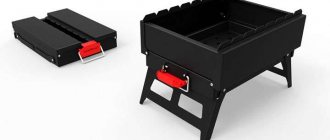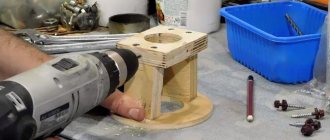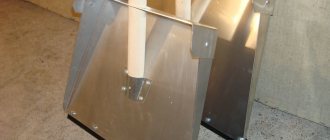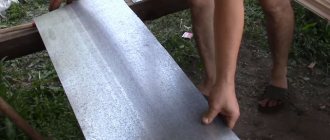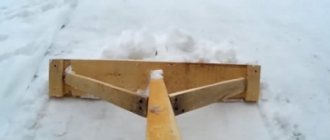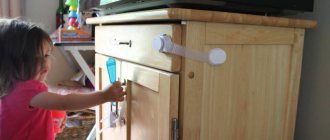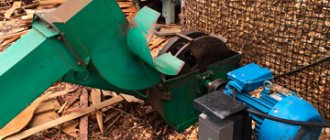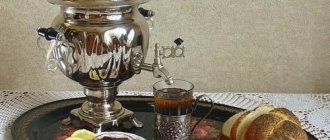When raw wood and household waste are burned in a stove, a large amount of soot is released, which settles on the walls of the pipes. Because of this, thrust decreases and the intensity of fuel combustion decreases. The result of this phenomenon can be poisoning of people with carbon monoxide, which ceases to be removed from the room. A chimney brush can solve the draft problem. This device is considered the most effective way to eliminate such problems. Let's look at what it is, its structure, types, advantages and disadvantages.
Causes of chimney contamination
Boilers and stoves are installed in almost all private houses and cottages, bathhouses and garages. As a rule, firewood or coal is used to fire them. But, quite often, fireplaces are used to dispose of old tires, household items and construction waste. These objects emit thick smoke, which settles in the form of solid particles on the inner walls of the exhaust pipe. Gradually thickening, the soot completely blocks the exhaust duct.
In addition, chimneys become clogged for the following reasons:
- ingress of branches, leaves, small animals and bird nests;
- partial or complete destruction of the channel due to wear or improper assembly;
- the formation of condensate, which, upon contact with combustion products, forms a viscous and sticky substance.
Signs of a clogged chimney include the fallout of soot fragments into the firebox during boiler cleaning, poor combustion of fuel when the ash pan is open, poor draft and heavy soot when burning fuel.
Other uses for a toothbrush
An old toothbrush will help you out where “jewelry work” is required and large assistants simply cannot maneuver. Surely some of you are already using this accessory for other purposes, and some of the ideas below have never even occurred to you.
What is convenient to clean with a toothbrush:
- Gas stove turntables. Knobs that control the gas supply are often covered with splashes from the stove and sticky residue. To “prevent” them, you can quickly walk over the surface with damp bristles with a drop of dishwashing detergent, and then wipe with a cloth dampened in clean water.
- Toaster. This device is distinguished by its miniature size and narrow slot openings. Crumbs often accumulate inside the toaster, which burn during use and spread a burning smell throughout the kitchen. A brush can be used to easily clean the interior surfaces of household appliances.
- Plumbing. Modern taps can have the most bizarre shapes. An old brush can easily clean the most difficult to reach places. Additionally, use a cleaning powder or gel cleaner to clean your plumbing fixtures, and your faucet will shine with its pristine shine.
- Cloth. Sometimes, before washing an item, you have to first get rid of stains. In this case, a toothbrush will also come in handy, as it acts on the tissue as delicately as possible. Apply stain remover to the dirty area, and then use our universal accessory.
- Upholstered furniture, car interior. The furniture surface can be cleaned with a vacuum cleaner, but dust often accumulates in the seams of the upholstery. You can thoroughly remove dust pellets by cleaning the grooves with a dry or slightly damp toothbrush.
- Bicycle chain. In order for a bicycle to serve faithfully for many years, it must be regularly maintained, without neglecting the wheel chain. It is quite difficult to clean lumps of dirt from the joints. Do this with a wet toothbrush and then wipe the chain with a dry, clean cloth to protect it from rust.
Only a modest imagination can limit the applications of a used toothbrush. Using elastic bristles, you can wash blind slats and mosquito nets, aquarium accessories, tile joints, clean computer keyboards and jewelry. When reusing the brush, you can not stand on ceremony, but simply throw it away if it gets dirty, replacing it with another one.
Source
How can you clean a chimney?
In order to clean the pipe coming from the boiler, stove and fireplace, there are many ways and means.
They are divided into the following categories:
- Thermal. The essence of this method is to destroy the blockage with high temperature. An object is placed in the firebox or directly in the chimney, which produces intense heat when burned. Termite blocks, anthracite and aspen firewood give good results. The carbon deposits are burned off manually with a gas burner.
- Chemical. They are available in the form of tablets, granules and powders. The funds are placed on smoldering coals. Under the influence of heat, ingredients are released that turn soot into dust, which completely crumbles into the firebox within a few days.
- Mechanical. To remove blockages, scrapers, brooms and brushes are used. Foreign objects are removed with a hook or crowbar. Flexible garden hoses, hoes, logs and weights on a rope, poles and telescopic fishing rods, and other improvised means are used as auxiliary tools.
There are also folk remedies for cleaning chimneys. Carbon deposits are removed by burning potato peelings in a firebox, pouring water over it, and immersing compacted snow in a heated pipe.
Why do stove ducts become clogged and how can they be cleaned?
The need to clean chimneys and internal flues of solid fuel heating units (boilers, fireplaces, stoves and various stoves) has both objective and subjective reasons. The first are due to the fact that any smoke consists of a gaseous part and tiny particles of carbon that did not have time to oxidize during the combustion process. The bulk of them leaves the chimney, flying into the atmosphere, but the part that has the largest weight and electrical charge settles in the chimney channels. The situation is further aggravated by water vapor and creosote, which moisten the walls of the flue and thereby contribute to the adhesion of soot. These deposits reduce the cross-section of the chimney, which reduces draft, which means the efficiency of the stove decreases and fuel consumption increases. But the main danger lies in the fact that further use of the heating device becomes unsafe.
Subjective reasons include:
- burning low-quality coal and raw wood;
- heating the furnace with waste with a high carbon content (plastic, rubber, etc.);
- incorrectly selected operating mode of the heating device;
- mistakes made during the construction of a stove or chimney.
After analyzing the factors that cause a chimney to become overgrown with soot, you will see that the situation can only be partially improved by reducing the amount of particulate matter in the smoke. Nevertheless, the chimney will have to be cleaned sooner or later.
You can do this in two ways:
- mechanical,
- chemical
The first involves removing carbon deposits and soot using various devices - scrapers, blades, brushes, etc. Using such tools in the chimney and flues, you can very successfully scrape soot from the walls, rake it into piles and dispose of it.
Chemical soot removal involves burning a product with a complex chemical composition in the furnace firebox. The substances released during its combustion interact with the most persistent deposits, which is why they soften, peel off from the walls of the channels and burn. As practice shows, chemical compounds are a fairly effective means of combating soot, but due to the relatively high cost, they are used much less frequently than scrapers, brooms and brooms.
Advantages and disadvantages of a brush
The most difficult thing to remove is soot that has filled almost the entire volume of the channel. In addition, the length of the chimney also plays a role. In some buildings it can be ten meters or more. It is simply impossible to work with poles of such length.
A brush on a cable has the following advantages:
- light and compact, easy to carry and transport;
- no restrictions on pipe height, shape and section size;
- the ability to adjust the weight of the load and, accordingly, the applied force.
The disadvantages of this device include its inability to break through solid blockages, remove condensation and remove foreign objects.
How the ruff works
The brush for cleaning chimney pipes consists of the following parts:
- Head. It is a hard pile fixed to the base, made of metal or plastic.
- Weighting agent. It is made in the shape of a ball or cylinder, made of iron or lead.
- Cable. It is the basis for fastening all parts. Made from iron or synthetic fiber.
- Hook. Located on the cable between the head and the load.
- Tubes They are mounted on a cable and are designed to create a dynamic force when pushing the brush down.
- Replaceable nozzles. Performed in the form of a pike or hook. Designed for breaking through obstacles and extracting dense objects.
To clean pipes of certain shapes, brushes with different parameters are used.
Types of ruffs
The selection of these devices is made according to the following criteria:
- Diameter. It can be small (up to 100 mm), medium (100 -250 mm) and large (more than 250 mm).
- Material of manufacture. Heads are made of copper, iron and polymer plastic.
- Form. Round, polygonal, oval, square.
- Type of cable. The working part is attached to a rope, plug tubes or cable located inside the tubes.
You should also pay attention to the weight of the sinker. It varies between 5-20 kg.
Make it yourself or buy it
This question invariably faces owners of property heated with coal or wood. If you have the skills to handle household tools, making a brush will not be difficult.
But this will require spending time, which everyone is sorely lacking. It is much easier to purchase a finished product from a factory. Fortunately, today retail stores offer a wide range of similar products, and their prices are quite reasonable.
Tips for choosing
When purchasing chimney cleaning devices, you should not focus on their cost. A cheap purchase may not be effective and will sit in the pantry for years.
The following factors need to be taken into account:
- brick channels can be processed with any material;
- To clean ceramic pipes, only a plastic brush may be used;
- steel chimneys can be cleaned with heads with bristles made of copper or brass;
It is better to purchase a weight with two eyes so that you can tie a rope to it and pull it down if it gets stuck.
The most popular brushes are from the following manufacturers:
- PCC (Poland) - plastic and metal, with a diameter of 120-400 mm;
- Hansa (Lithuania) - universal 150-400 mm;
- Chimney sweep (Russia) - a set with replaceable nozzles.
Specialized kit
You can purchase ready-made cleaning kits. They can be found in special stores. There brushes are available in different diameters; you can choose a different element for each chimney. The kit includes a cable (rope), a core, various brushes, and carabiners.
Making a ruff with your own hands
This is a creative and interesting activity that you can do in your free time from working in your garden or in the off-season. Before you start work, you need to prepare everything you need for this.
Required materials and tools
To make a chimney brush with your own hands you will need:
- hacksaw or grinder;
- pliers;
- adjustable wrench;
- steel washers;
- hard wire;
- hairpins;
- bolts and nuts;
If you are cleaning a ceramic pipe, you will need scissors for cutting plastic bottles.
Drawing and diagrams
To make the brush convenient, durable and functional, its design needs to be carefully thought out. As a basis for planning, you need to take a scale drawing of the chimney. Based on the available data, diagrams of individual components of the brush and the entire product as a whole are drawn up.
The following details are displayed in detail on paper:
- shape and size of the cargo;
- carabiner for attaching it;
- head device;
- carabiner loop;
- cable configuration.
After checking the schemes, final calculations are carried out.
Size calculation
The following table will help you make a design for a brush for cleaning a stove chimney:
| Condition | Index |
| Rope length | 110-120% of the pipe height |
| Head diameter | 80-120% channel cross-section |
| Load diameter | 30-35% of the chimney diameter |
| Distance between head and load | 15-25 cm |
| Weight form | Ball, bullet |
How to make a ruff
Let's look at how a brush is made from plastic bottles.
- We take 5-6 containers of the same size, remove the lids from them and cut off the bottom at the same distance.
- Using scissors, cut strips 4-5 mm wide from the bottom to the neck.
- We join the resulting blanks together. We fix them with wide washers, a nut and a bolt with a head made in the shape of a loop.
- We make a weighting agent from an iron can, lead and a thick steel pond. We attach a durable carabiner to the ring.
- We string thin steel or aluminum tubes 80-100 cm long onto a plumbing cable. We screw the cable to the head using an adapter with internal thread.
The chimney brush is ready.
About chimney pipe prevention
In the process of development, heating systems became more and more advanced. Some techniques have been experimentally developed to significantly reduce soot formation, such as:
- Chimney insulation. This is done in the following ways: by plastering the surface of brick pipes; covering the outer surface with various roll or slab insulation, followed by installing protection from foil film, metal sheet and other materials; the use of special insulated blocks with ceramic pipes for the installation of a chimney; protective devices to cover the chimney outlet from debris and bird nesting; the use of two-layer “sandwich pipes” made of metal with a layer of insulation.
The purpose of all these measures is to create conditions for rapid heating of the smoke channel, as a result of which the dew point in the process rises higher, until it exits into the environment.
- The largest amount of soot is formed at the bends of the chimney, so no more than one elbow should be used in the design if it is absolutely necessary to change its direction.
- When installing a chimney, it is mandatory to scrape the inner surface in order to reduce the number of irregularities that contribute to the deposition of soot.
- The use of chemical or biological methods for cleaning the internal surface of chimneys during combustion.
Frequent mistakes and problems when making brushes
The main difficulty in making a brush is finding a suitable material. The most difficult thing to make is the head of the device. At this stage, precision and considerable effort are required.
Most masters make the following mistakes:
- Short cable length. As a result, the brush does not reach the end of the pipe. As a result, the most inaccessible area near the firebox remains clogged.
- Poor tightening of the wire between the washers. This leads to the destruction of the homemade brush during the process of cleaning the chimney.
- The pole or plugs are not strong enough. When loaded, these parts bend, preventing the brush from advancing. In the worst case, the handle breaks and its fragments get stuck in the pipe.
- Selecting a cleaning material that does not match the internal surface of the chimney. Thus, a metal brush can hopelessly ruin ceramics.
- The head width does not match the channel parameters. The head either does not fit into it or does not reach the walls.
Self-cleaning
Let's look at the instructions on how to properly clean chimneys with your own hands:
The head is removed from the pipe. The outer part of the pipe is inspected, and if there is contamination, they are removed with a broom or scraper.
A load is lowered into the chimney so that it reaches the base. All dense layers must be knocked down with a core.
When the channel is free of large accumulations of soot, brushes of the required size are attached above the load. The rope should be gradually pulled up with forward movements.
Having looked at the photo of how to clean a chimney, you will notice that this is a dirty and tedious job.
The inspection chambers in the pipe need to be checked periodically. They should be cleared of falling soot. At the end of the work they are completely cleaned.
Rules for cleaning a chimney with a brush
Since the pipe can only be accessed from the roof, special attention must be paid to safety measures. The worker must use a safety line; it is advisable to set up a temporary barrier.
It is not recommended to work on slippery roofs.
When cleaning the chimney with a brush, it is recommended to follow these rules:
- Before starting cleaning, tightly close the firebox and vent.
- Check the tool for serviceability. Test all parts for strength.
- After passing each meter of pipe, remove the crumbled soot from the firebox.
- After completing the passage of the pipe, use a hard brush to replace it with a soft one for final polishing of its walls.
Expert advice
Professional chimney sweeps know the secrets of quickly and efficiently removing blockages of any complexity.
Their recommendations are as follows:
- buy or make a brush so that you can use it to scrape off carbon deposits and break through dense blockages;
- before starting work, use chemicals to weaken the soot structure;
- Periodically remove accumulated dirt and debris from the bristles.
- After finishing work, the tool must be cleaned, lubricated and stored in a dry place.
How long does a toothbrush last?
Dentists recommend changing your plastic toothbrush every 3 months, even if it is not worn out and looks like new. These recommendations are based on evidence that bacteria accumulate on the bristles over time. The warm and humid microclimate of the bathroom promotes their reproduction.
In addition, the longer the brush lasts, the softer the bristles become, and they can also flake off. The changes are little noticeable, but brushing your teeth will no longer be as effective as at the beginning. This means that the toothbrush loses its effectiveness and does not cope with its main function - removing soft plaque. As a result, the risk of dental caries increases.
If the bristles spread out in different directions, which inevitably happens over time, brushing your teeth also becomes unsafe. Synthetic hairs sticking out in different directions can injure your gums. In this case, the hygienic procedure can also have disastrous consequences for the enamel, especially if your teeth are highly sensitive.
Important! If you have had an infectious disease, the brush has fallen into dirty water, or the bristles have changed color, you will need to replace your teeth cleaning accessory ahead of schedule.
